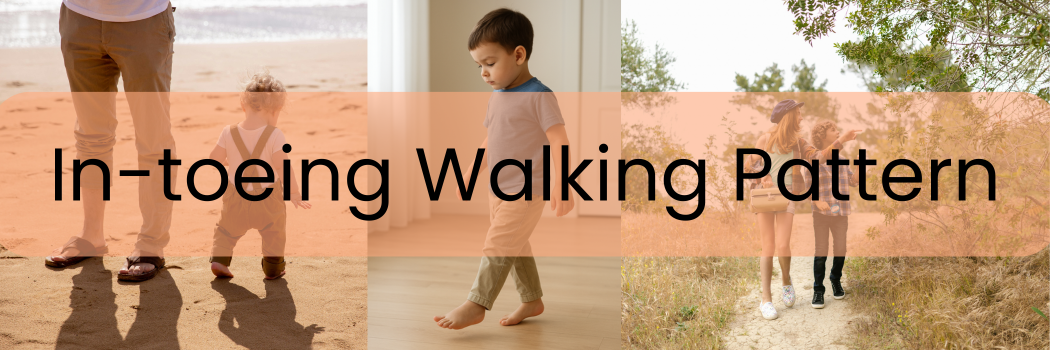In-toeing, should I be concerned
Understanding Intoeing in Children
As a parent, you may notice your child’s feet turning inwards when they walk or run. This is commonly called intoeing or being “pigeon-toed.” It can be worrying at first, but in most cases, intoeing is a normal part of development and often improves with time.
Why does intoeing happen?
Intoeing can occur for a few different reasons, depending on your child’s age:
Feet (Metatarsus Adductus): In babies and toddlers, the foot itself may curve inwards. This is often due to how your baby was positioned in the womb.
Shin Bones (Tibial Torsion): In preschool-aged children, the shin bone may naturally twist inwards, making the feet point in.
Thigh Bones (Femoral Anteversion): In older children (usually 4–7 years), the thigh bone can rotate inwards, leading to the knees and feet turning inwards.
Will my child grow out of it?
The good news is that intoeing usually resolves on its own as children grow, and it rarely causes long-term problems. Most children learn to walk, run, and play without pain or difficulty.
When should you seek advice?
Although intoeing is often nothing to worry about, you may want to seek a physiotherapy or medical opinion if:
Your child trips or falls frequently.
The intoeing is worsening rather than improving.
One leg looks very different from the other.
Your child has pain, swelling, or difficulty keeping up with peers.
How can physiotherapy help?
A paediatric physiotherapist can:
Assess your child’s movement and alignment.
Provide reassurance and guidance on what to expect.
Recommend simple stretches, strengthening, or activity ideas if needed.
Support you with advice on footwear and posture.
Key takeaway
Intoeing is very common and usually nothing to worry about. With reassurance, monitoring, and the right support if needed, most children grow out of it naturally.
At Bloom and Balance Physio, we’re here to help parents feel confident about their child’s development. If you’d like advice about your child’s walking, don’t hesitate to get in touch.


